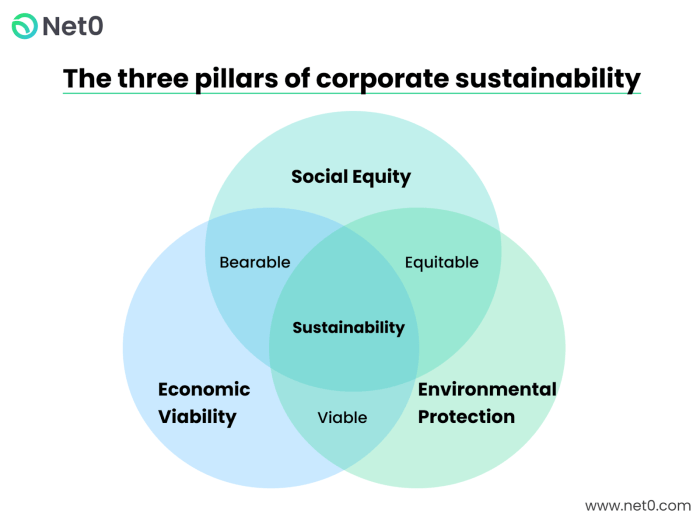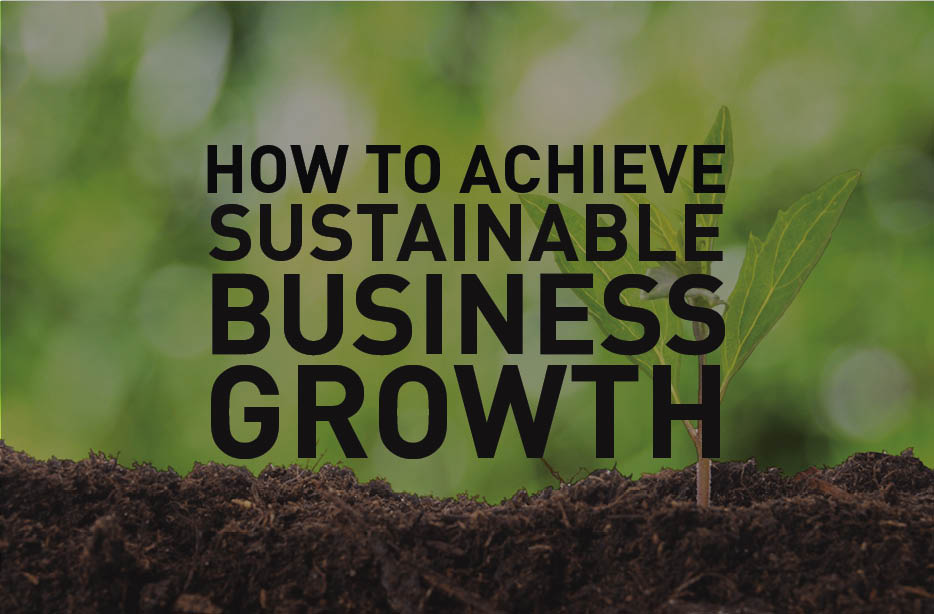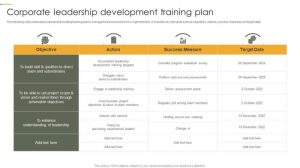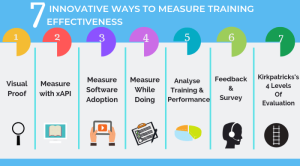
Sustainable corporate growth represents a paradigm shift, moving beyond traditional profit-maximization models to encompass environmental and social responsibility. This integrated approach recognizes that long-term success hinges not only on economic viability but also on minimizing environmental impact and fostering positive social contributions. This guide explores the multifaceted nature of sustainable growth, examining key performance indicators, successful strategies, and the crucial role of corporate training and transparent reporting.
We will delve into practical strategies for reducing carbon footprints, integrating sustainability into supply chains, and fostering diverse and inclusive workplaces. We’ll also analyze how investing in sustainability can lead to improved operational efficiency and cost savings, ultimately enhancing long-term value creation. Case studies and examples of leading companies will illustrate the tangible benefits of adopting a sustainable approach to corporate growth.
Defining Sustainable Corporate Growth

Sustainable corporate growth represents a holistic approach to business expansion, moving beyond traditional profit-maximization models to encompass environmental and social considerations alongside economic success. It’s about building a thriving business that contributes positively to the planet and society, ensuring long-term viability and resilience.Sustainable corporate growth is multifaceted, demanding a balanced consideration of economic, environmental, and social factors. Economic success remains crucial, focusing on profitability, revenue growth, and shareholder value.
However, this is inextricably linked to environmental responsibility, encompassing reduced carbon emissions, efficient resource management, and minimizing waste. Simultaneously, a strong social dimension is vital, encompassing ethical labor practices, community engagement, and promoting diversity and inclusion within the workforce and supply chain. Ignoring any one of these pillars weakens the overall structure, making true sustainable growth unattainable.
Key Performance Indicators (KPIs) for Sustainable Corporate Growth
Measuring sustainable corporate growth requires a comprehensive set of KPIs that capture performance across all three dimensions. These metrics are not static and should be tailored to the specific industry, company size, and strategic goals. However, some common indicators include:* Economic KPIs: Revenue growth, profitability (net income, return on assets), market share, employee productivity, shareholder return.
Environmental KPIs
Greenhouse gas emissions (Scope 1, 2, and 3), water consumption, waste generation, energy efficiency, use of renewable energy, biodiversity impact.
Social KPIs
Employee satisfaction and turnover, diversity and inclusion metrics, community investment, supplier ethics, human rights compliance, customer satisfaction, product safety.
Examples of Companies Demonstrating Successful Sustainable Corporate Growth Strategies
Several companies exemplify successful integration of sustainability into their growth strategies. Patagonia, for example, has built its brand around environmental activism and responsible sourcing, resulting in strong brand loyalty and sustained growth. Unilever, through its Sustainable Living Plan, has linked its business goals to social and environmental targets, demonstrating that sustainability can be a driver of profitability. Interface, a flooring company, has committed to becoming a “climate-positive” enterprise, demonstrating how environmental leadership can be a competitive advantage.
These examples show that sustainable growth is not just a matter of compliance but a strategic imperative that can drive innovation and enhance competitiveness.
Comparison of Traditional and Sustainable Corporate Growth Models
| Model | Economic Focus | Environmental Focus | Social Focus |
|---|---|---|---|
| Traditional Corporate Growth | Maximizing shareholder value, short-term profits, rapid expansion | Minimal environmental consideration, often prioritizing cost reduction over environmental protection | Limited social responsibility, often focusing on compliance rather than proactive engagement |
| Sustainable Corporate Growth | Long-term value creation, balanced stakeholder interests, responsible profit generation | Environmental stewardship, resource efficiency, minimizing environmental impact, carbon neutrality | Social equity, ethical labor practices, community engagement, positive social impact |
Environmental Sustainability in Corporate Growth
Environmental sustainability is no longer a mere trend; it’s a critical factor determining long-term corporate viability. Ignoring environmental impacts exposes businesses to significant financial risks, including regulatory penalties, reputational damage, and decreased investor confidence. Conversely, embracing environmental responsibility can unlock new market opportunities, enhance brand reputation, and attract environmentally conscious consumers and investors.The impact of a company’s environmental footprint is multifaceted and far-reaching.
It influences not only the planet’s health but also the company’s bottom line.
Carbon Emissions and Long-Term Corporate Viability
High carbon emissions contribute directly to climate change, resulting in increased operational costs due to extreme weather events, resource scarcity, and regulatory pressure. For example, companies reliant on water-intensive processes face rising water costs and potential operational disruptions due to droughts. Similarly, businesses with significant energy consumption are vulnerable to fluctuating energy prices and carbon taxes. The long-term viability of a company heavily reliant on fossil fuels is increasingly threatened by the global shift towards renewable energy and stricter emission regulations.
Companies failing to adapt risk becoming uncompetitive and ultimately unsustainable.
Strategies for Reducing Environmental Footprint
Reducing a company’s environmental footprint involves a multifaceted approach encompassing waste reduction, renewable energy adoption, and efficient resource management. Waste reduction strategies can include implementing robust recycling programs, minimizing packaging, and embracing circular economy principles – designing products for durability, repairability, and recyclability. Adopting renewable energy sources like solar and wind power significantly reduces reliance on fossil fuels, lowering carbon emissions and operational costs.
Efficient resource management involves optimizing energy and water usage through technological upgrades and operational improvements. For instance, implementing smart building technologies can significantly reduce energy consumption.
Integrating Environmental Sustainability into the Supply Chain
Integrating environmental sustainability into a company’s supply chain requires collaborative efforts with suppliers to promote environmentally responsible practices throughout the entire product lifecycle. This includes selecting suppliers committed to sustainable practices, implementing transparent and traceable supply chains, and setting environmental performance standards for suppliers. Regular audits and performance evaluations help ensure compliance and continuous improvement. Incentivizing suppliers to adopt sustainable practices, such as offering preferential pricing or long-term contracts, encourages broader adoption.
A successful approach involves establishing clear communication channels and fostering collaborative relationships with suppliers. For example, a clothing company might work with its cotton suppliers to ensure sustainable farming practices are implemented, reducing water usage and pesticide reliance.
Innovative Technologies Promoting Environmental Sustainability
Several innovative technologies are transforming how businesses approach environmental sustainability. Examples include advanced recycling technologies that can process complex waste streams, creating valuable secondary materials. Artificial intelligence (AI) and machine learning (ML) are being utilized to optimize energy consumption in manufacturing processes and predict equipment failures, reducing waste and improving efficiency. Blockchain technology enhances supply chain transparency, enabling companies to track materials and products from origin to consumer, ensuring sustainable sourcing and reducing the risk of unethical practices.
Furthermore, the development and deployment of carbon capture and storage (CCS) technologies are actively being pursued to mitigate carbon emissions from industrial processes. These advancements demonstrate the increasing role of technology in driving environmental sustainability within corporate operations.
Social Responsibility and Corporate Growth

Sustainable corporate growth isn’t solely about environmental stewardship; it’s intrinsically linked to a company’s social impact. A strong social responsibility framework enhances brand reputation, attracts and retains talent, and fosters a more engaged and loyal customer base, ultimately contributing to long-term profitability and growth. Ignoring social issues can lead to significant reputational damage, legal challenges, and decreased investor confidence.Socially responsible practices are no longer a “nice-to-have” but a necessity for companies aiming for sustainable growth in today’s increasingly conscious marketplace.
Consumers, investors, and employees are actively seeking out businesses that align with their values, making social responsibility a critical component of a successful business strategy.
Key Social Issues Relevant to Sustainable Corporate Growth
Several key social issues significantly influence a company’s ability to achieve sustainable growth. These include ethical labor practices, meaningful community engagement, and the upholding of human rights throughout the supply chain. Neglecting these areas can lead to negative consequences, including worker exploitation, community unrest, and damage to brand reputation. Addressing these issues proactively builds trust and strengthens the company’s social license to operate.
Best Practices for Fostering a Diverse and Inclusive Workplace
Creating a diverse and inclusive workplace is crucial for sustainable corporate growth. Diversity of thought and experience leads to innovation, improved decision-making, and better understanding of diverse customer bases. Best practices include implementing inclusive hiring practices, providing diversity and inclusion training for all employees, establishing employee resource groups (ERGs), and setting measurable diversity goals. For example, a company might aim to increase the representation of women and underrepresented minorities in leadership positions by a certain percentage within a defined timeframe.
Regularly auditing recruitment and promotion processes to identify and address any biases is also vital. This proactive approach not only enhances the work environment but also improves the company’s reputation and attracts top talent.
Measuring and Reporting on Social Impact
Measuring and transparently reporting on a company’s social impact is essential for accountability and demonstrating commitment to social responsibility. This involves establishing key performance indicators (KPIs) related to social issues relevant to the business, such as employee satisfaction, diversity metrics, community investment, and human rights performance within the supply chain. Regular data collection and analysis are needed to track progress against these KPIs.
Companies can then use this data to create comprehensive social impact reports, which can be shared with stakeholders, including investors, employees, customers, and the wider community. This demonstrates transparency and accountability, building trust and strengthening the company’s social license to operate. For example, a company might measure its employee satisfaction through regular surveys and track its progress in reducing its carbon footprint through detailed energy consumption data.
Different Approaches to Corporate Social Responsibility (CSR)
Various approaches to corporate social responsibility exist, ranging from philanthropic activities to integrated CSR strategies deeply embedded within a company’s core business model. Philanthropic approaches involve donating to charities or supporting community initiatives, while integrated CSR strategies aim to embed social and environmental considerations into every aspect of the business, from product design to supply chain management. A comparative analysis reveals that integrated CSR strategies generally lead to more significant and sustainable positive impacts because they are not merely add-ons but fundamental components of the company’s operations.
For example, a company might choose to source its materials from ethical and sustainable suppliers, reducing its environmental impact while also promoting fair labor practices throughout its supply chain. This approach demonstrates a commitment to social responsibility that extends beyond mere donations and contributes directly to the company’s long-term sustainability.
Economic Viability and Sustainable Growth
Sustainable corporate growth isn’t merely an ethical aspiration; it’s a financially sound strategy. Long-term value creation is intrinsically linked to sustainable practices, as businesses that prioritize environmental and social responsibility often experience enhanced resilience, improved brand reputation, and increased access to capital. This section explores the economic benefits of sustainability, demonstrating how it translates into both profit and positive impact.Long-term value creation is directly tied to sustainable practices because they mitigate risks and unlock new opportunities.
Companies that proactively manage environmental and social impacts demonstrate a commitment to responsible resource management, reducing their vulnerability to supply chain disruptions, regulatory changes, and reputational damage. This proactive approach fosters trust with stakeholders, including investors, customers, and employees, leading to increased loyalty and reduced costs associated with negative publicity or legal action. Furthermore, sustainable practices can open doors to new markets and revenue streams, such as those focused on eco-conscious consumers or sustainable technologies.
Sustainable Business Models Generating Profit and Positive Impact
Numerous businesses demonstrate that profitability and positive social and environmental impact are not mutually exclusive. Patagonia, for example, is a leading outdoor apparel company known for its commitment to environmental sustainability. They actively promote fair labor practices, use recycled materials in their products, and donate a percentage of their sales to environmental organizations. This commitment resonates strongly with their target market, contributing to their continued success and strong brand loyalty.
Similarly, Unilever’s Sustainable Living Plan has focused on reducing environmental impact while simultaneously boosting sales of sustainable products. Their approach demonstrates that incorporating sustainability into core business strategies can lead to both financial and social gains.
Investing in Sustainability: Improved Operational Efficiency and Cost Savings
Investing in sustainability often translates to significant operational efficiency improvements and cost savings. Energy efficiency upgrades, for example, such as installing LED lighting or improving insulation, can drastically reduce energy consumption and lower utility bills. Waste reduction programs, through better recycling and waste management practices, minimize disposal costs and can even generate revenue through the sale of recyclable materials.
Furthermore, adopting sustainable supply chain practices, such as sourcing materials from responsible suppliers, can reduce risks associated with unethical labor practices or environmental damage, ultimately protecting a company’s reputation and reducing potential liabilities. A company that invests in water conservation technologies might reduce its water bills and simultaneously enhance its sustainability profile, attracting environmentally conscious consumers and investors.
Case Study: Financial Benefits of Sustainable Practices
Consider the case of Interface, a global flooring company. Their ambitious sustainability initiative, Mission Zero, aimed to eliminate any negative impact on the environment by 2020. While they didn’t completely reach their goal, their efforts resulted in significant cost savings through reduced energy consumption, waste reduction, and the development of more sustainable manufacturing processes. These cost savings, coupled with increased brand reputation and customer loyalty, contributed to improved profitability.
Their commitment to sustainability demonstrably enhanced their bottom line, proving that a focus on environmental responsibility can be a powerful driver of financial success. Interface’s experience illustrates that a long-term, strategic approach to sustainability, though initially requiring investment, ultimately delivers strong financial returns.
Corporate Growth and Corporate Training
Sustainable corporate growth hinges on a workforce equipped to understand and implement sustainable practices. Employee training plays a pivotal role in fostering a culture of environmental responsibility, social consciousness, and economic viability, ultimately driving long-term success. A well-designed training program can bridge the gap between corporate sustainability goals and on-the-ground action.Employee training promotes sustainable practices by equipping staff with the knowledge, skills, and understanding to make environmentally and socially responsible choices in their daily work.
This includes understanding the company’s sustainability policies, identifying areas for improvement, and implementing best practices across various departments. Furthermore, effective training fosters a sense of ownership and accountability among employees, encouraging them to actively participate in the company’s sustainability journey.
The Role of Employee Training in Promoting Sustainable Practices
Effective employee training is crucial for embedding sustainability into the corporate culture. Training programs should not only impart knowledge but also develop practical skills and change attitudes towards environmental and social responsibility. For example, training on waste reduction techniques can empower employees to actively seek out opportunities for waste minimization in their daily tasks. Similarly, training on ethical sourcing can ensure employees understand and adhere to the company’s commitment to fair labor practices throughout its supply chain.
Ultimately, a well-trained workforce becomes a driving force in the company’s sustainability efforts.
A Corporate Training Program Focused on Sustainability Awareness and Best Practices
This program would be modular, allowing for customization based on employee roles and departments. It would combine online learning modules, workshops, and on-the-job coaching.
- Module 1: Introduction to Sustainability: This module would cover the basic concepts of sustainability, the company’s sustainability goals, and the importance of employee involvement.
- Module 2: Environmental Sustainability: This module would focus on practical strategies for reducing waste, conserving energy, and minimizing the company’s environmental footprint. This might include case studies of successful waste reduction initiatives and energy-saving technologies.
- Module 3: Social Responsibility: This module would address ethical sourcing, fair labor practices, and community engagement. It could include interactive exercises and discussions on ethical dilemmas.
- Module 4: Economic Viability and Sustainability: This module would explore the link between sustainable practices and long-term economic success. It would discuss the financial benefits of adopting sustainable strategies, such as cost savings from reduced waste and improved efficiency.
- Module 5: Practical Application and Continuous Improvement: This module would provide employees with opportunities to apply their learning through on-the-job projects and participate in continuous improvement initiatives. It would also incorporate feedback mechanisms to track progress and identify areas for further development.
Integrating Sustainability into Existing Employee Training Programs
Sustainability can be seamlessly integrated into existing training programs by incorporating relevant modules or incorporating sustainability considerations into existing training materials. For instance, a training program on supply chain management could include a module on ethical sourcing and responsible procurement. Similarly, a training program on risk management could incorporate the risks associated with climate change and environmental degradation. This approach avoids creating separate, isolated sustainability training programs, instead embedding sustainability awareness into the everyday fabric of employee development.
Examples of Successful Corporate Training Initiatives Related to Sustainability
Many companies have successfully integrated sustainability training into their operations. For example, Unilever’s Sustainable Living Plan has included extensive employee training programs focused on reducing the environmental impact of their products and operations. Similarly, Patagonia’s commitment to environmental responsibility is reflected in their employee training programs, which emphasize environmental stewardship and ethical business practices. These initiatives demonstrate the effectiveness of incorporating sustainability into employee training and the positive impact on both the company’s performance and its employees’ engagement.
Content of a Corporate Training Module: Practical Application of Sustainable Practices
A practical training module would focus on hands-on application of sustainable practices.
- Waste Reduction: Techniques for reducing waste generation, proper waste segregation, and recycling procedures. A practical exercise could involve a waste audit of the employee’s workspace.
- Energy Conservation: Strategies for reducing energy consumption, such as turning off lights and equipment when not in use, and using energy-efficient appliances. A practical exercise could involve a competition to see which team can reduce its energy consumption the most.
- Water Conservation: Methods for conserving water, such as fixing leaks and using water-efficient fixtures. A practical exercise could involve identifying and reporting water leaks in the workplace.
- Sustainable Procurement: Criteria for selecting environmentally friendly and ethically sourced products and services. A practical exercise could involve researching and comparing different suppliers based on their sustainability practices.
- Sustainable Transportation: Options for reducing transportation emissions, such as using public transportation, cycling, or carpooling. A practical exercise could involve planning a sustainable commute to work.
Measuring and Reporting on Sustainable Corporate Growth
Tracking and communicating a company’s sustainability performance is crucial for demonstrating commitment, attracting investors, and improving operational efficiency. Effective measurement and reporting provide transparency and accountability, allowing stakeholders to assess a company’s progress towards its sustainability goals. This process involves selecting appropriate frameworks, collecting relevant data, and crafting a comprehensive report that accurately reflects the company’s environmental, social, and economic impacts.
Sustainability Reporting Frameworks and Standards
Several established frameworks and standards guide the measurement and reporting of sustainability performance. These frameworks offer structured approaches, ensuring consistency and comparability across organizations. Key examples include the Global Reporting Initiative (GRI), the Sustainability Accounting Standards Board (SASB), and the Task Force on Climate-related Financial Disclosures (TCFD). The GRI provides a widely used framework covering economic, environmental, and social performance.
SASB focuses on material sustainability issues relevant to specific industries, offering a more industry-specific approach. The TCFD, on the other hand, concentrates on climate-related risks and opportunities, emphasizing financial implications. Choosing the right framework depends on a company’s size, industry, and specific sustainability priorities.
Importance of Transparent and Credible Sustainability Reporting
Transparent and credible reporting is paramount for building trust with stakeholders. It enables informed decision-making by investors, customers, and other stakeholders, fostering greater accountability and promoting responsible business practices. Credible reporting requires rigorous data collection, independent verification, and clear communication of both successes and challenges. Lack of transparency can damage reputation, deter investment, and lead to regulatory scrutiny.
Conversely, robust reporting can enhance a company’s brand image, attract talent, and unlock new business opportunities. For example, a company with a demonstrably strong sustainability track record may command a higher stock valuation or secure favorable lending terms.
Developing a Comprehensive Sustainability Report
Creating a comprehensive sustainability report involves a multi-stage process. It begins with defining the scope and materiality of the report, identifying the key environmental, social, and economic aspects most relevant to the company’s operations and stakeholders. Next, data is collected through various means, including internal audits, stakeholder engagement, and external data sources. This data is then analyzed to assess progress against established goals and benchmarks.
The report itself should clearly communicate the company’s sustainability strategy, performance data, and future plans. It should also include information on governance structures, management systems, and stakeholder engagement processes. Finally, the report undergoes a review process to ensure accuracy and credibility, potentially involving external assurance providers.
Sample Sustainability Report: Key Sections and Data Points
A sample sustainability report might include the following sections:
| Section | Data Points |
|---|---|
| Executive Summary | Overview of sustainability performance, key achievements, and future goals. |
| Governance and Management | Description of the company’s sustainability governance structure, policies, and management systems. |
| Environmental Performance | Greenhouse gas emissions (Scope 1, 2, and 3), water consumption, waste generation, energy efficiency improvements. For example, a reduction in carbon emissions by 15% compared to the previous year. |
| Social Performance | Employee diversity and inclusion metrics, community engagement initiatives, human rights policies and practices. For example, achieving 50% female representation in leadership roles. |
| Economic Performance | Revenue generated from sustainable products or services, investment in research and development of sustainable technologies, economic contribution to local communities. For example, a 10% increase in sales of eco-friendly products. |
| Stakeholder Engagement | Summary of stakeholder consultations and feedback, demonstrating responsiveness to stakeholder concerns. |
| Future Outlook | Description of the company’s sustainability goals and targets for the coming years, outlining planned initiatives and expected outcomes. |
In conclusion, sustainable corporate growth is not merely a trend but a necessity for long-term success in today’s interconnected world. By embracing environmental responsibility, social equity, and economic viability, companies can create enduring value for stakeholders, contribute to a healthier planet, and build a more just and equitable society. The journey towards sustainable growth requires commitment, innovation, and a willingness to adapt, but the rewards—both financial and societal—are substantial and enduring.
General Inquiries
What are the potential risks of not adopting sustainable corporate growth practices?
Risks include reputational damage, decreased investor confidence, regulatory penalties, increased operational costs due to resource depletion, and difficulty attracting and retaining talent.
How can small and medium-sized enterprises (SMEs) implement sustainable practices?
SMEs can start with small, manageable steps, such as reducing energy consumption, implementing waste reduction programs, and engaging with local communities. They can also leverage resources and support available from government agencies and non-profit organizations.
What is the role of consumers in promoting sustainable corporate growth?
Consumers play a crucial role by demanding sustainable products and services, supporting companies with strong sustainability commitments, and holding businesses accountable for their environmental and social impact.




